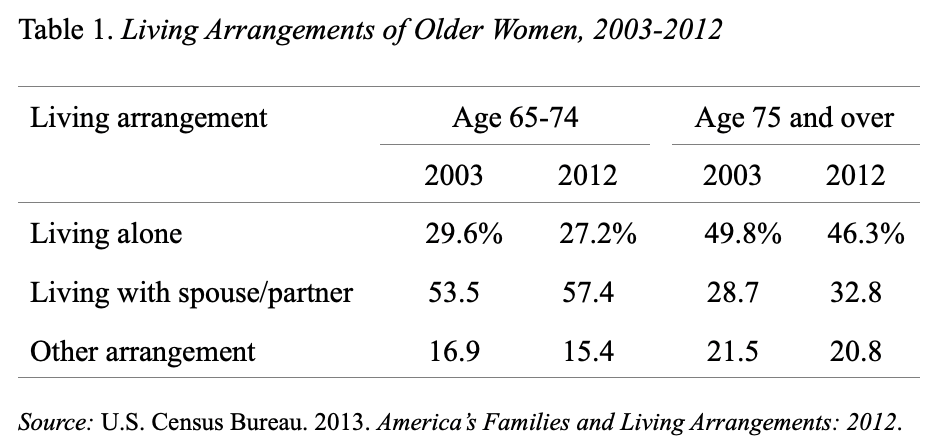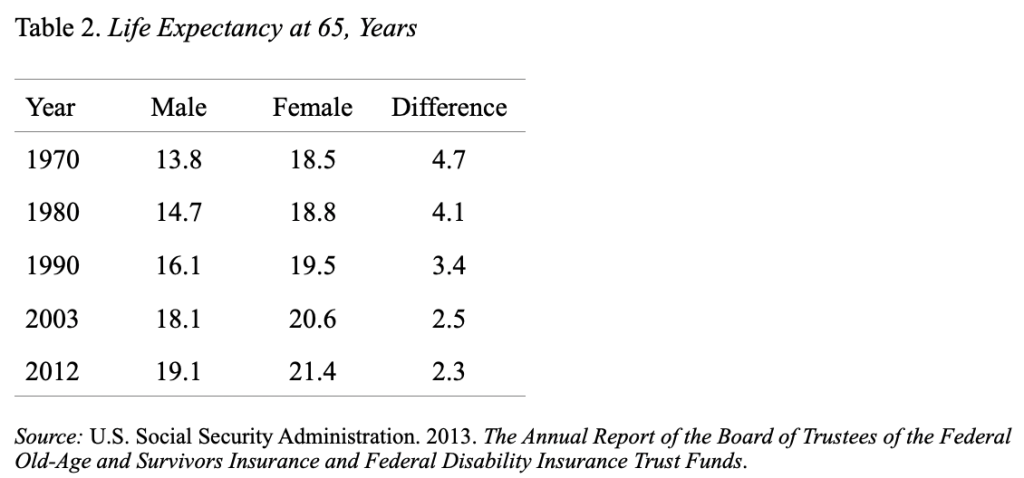
Fewer Older Women Are Living Alone
Alicia H. Munnell is a columnist for MarketWatch and senior advisor of the Center for Retirement Research at Boston College.
Shift in living arrangements reflects converging life expectancies between men and women
The U.S. Census Bureau recently released America’s Families and Living Arrangements: 2012, which presents a number of interesting trends. For example, the percent of households that contained married couples with children halved between 1970 and 2012, and the proportion of one-person households increased by 10 percentage points over the same period. But my focus is retirement, so I was interested in what the report had to say about the living arrangements of older people.
One figure showed the composition of one-person households between 1970 and 2012. Most groups constituted a relatively constant share of the total. The exception was women age 65-74, whose share dropped from 19.6 percent in 1970 to 10.2 percent in 2012. (Men 65-74 constituted a relatively steady 5 percent of one-person households over this period.) This drop suggests that women are more likely to have a husband present today than they were four decades ago.
Consistent with this long-term trend is the increase in the percentage of women living with a spouse/partner between 2003 (the date of the last such report) and 2012. As shown in Table 1, this percentage for women age 65-74 rose from 53.5 percent to 57.4 percent in less than a decade. Although the levels of cohabitation are lower for those 75 and over, the pattern is the same.

The most likely explanation for the change in living arrangements among older women is the closing gap between male and female life expectancy. Between 1970 and 2012, the difference was halved from 4.7 years to 2.3 years (see Table 2). The other factor is that the average age difference between husbands and wives has dropped from 4 1/2 years to 2 1/2 years. These two trends mean that husbands and wives can spend more time together.

These developments all seem like good news to me. But my colleagues, being economists, are investigating whether this emerging pattern has a downside. Specifically they are exploring whether husbands are now more likely to have chronic diseases and die in a slow and expensive way. Until they get an answer, my plan is to simply enjoy what seems like positive news on the retirement front.







